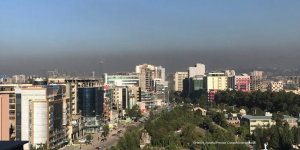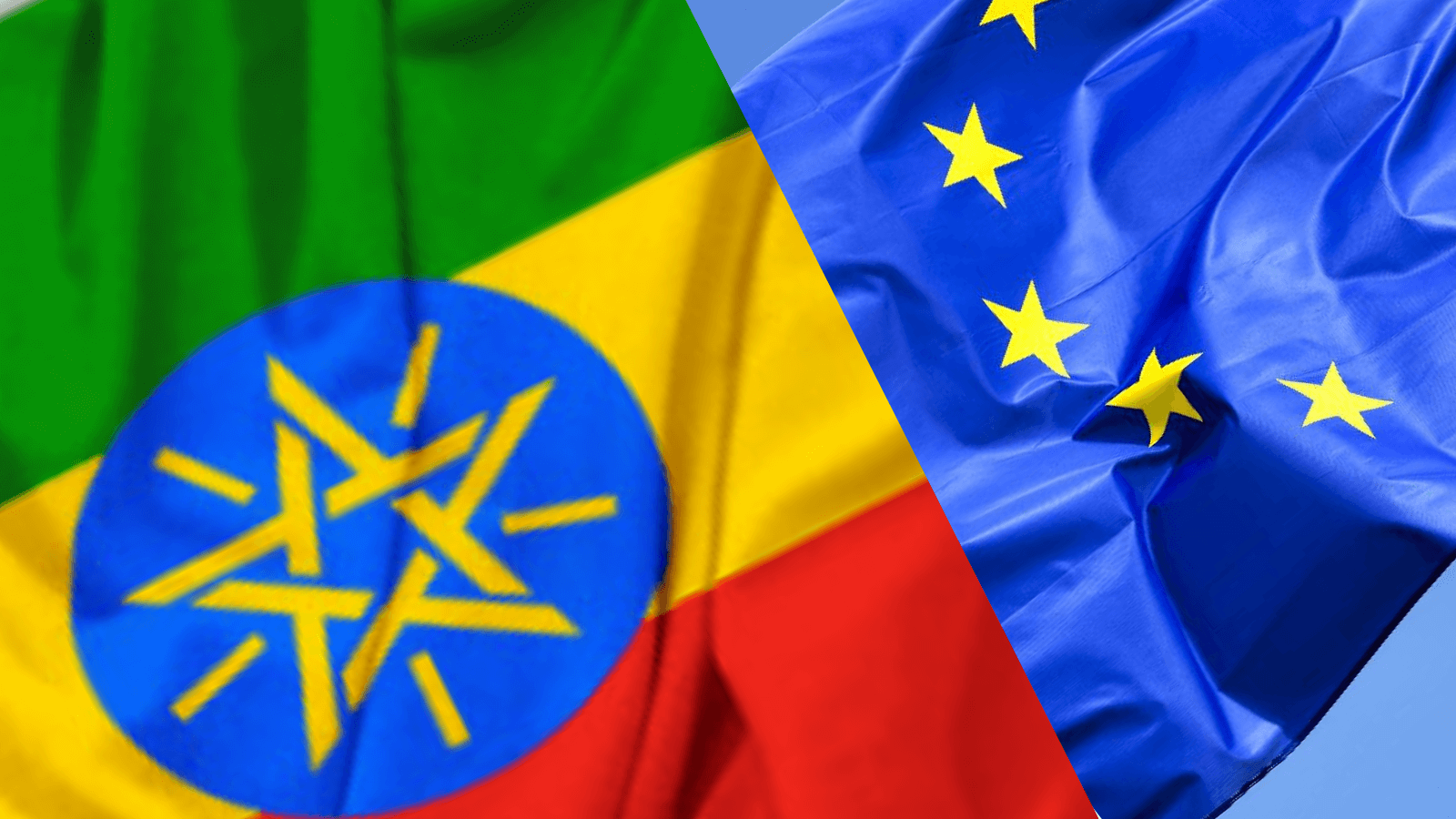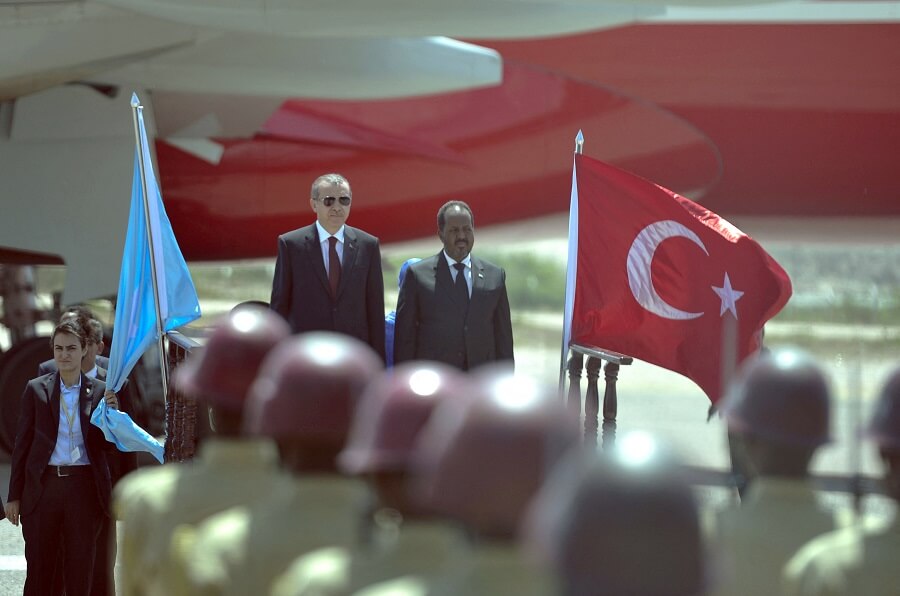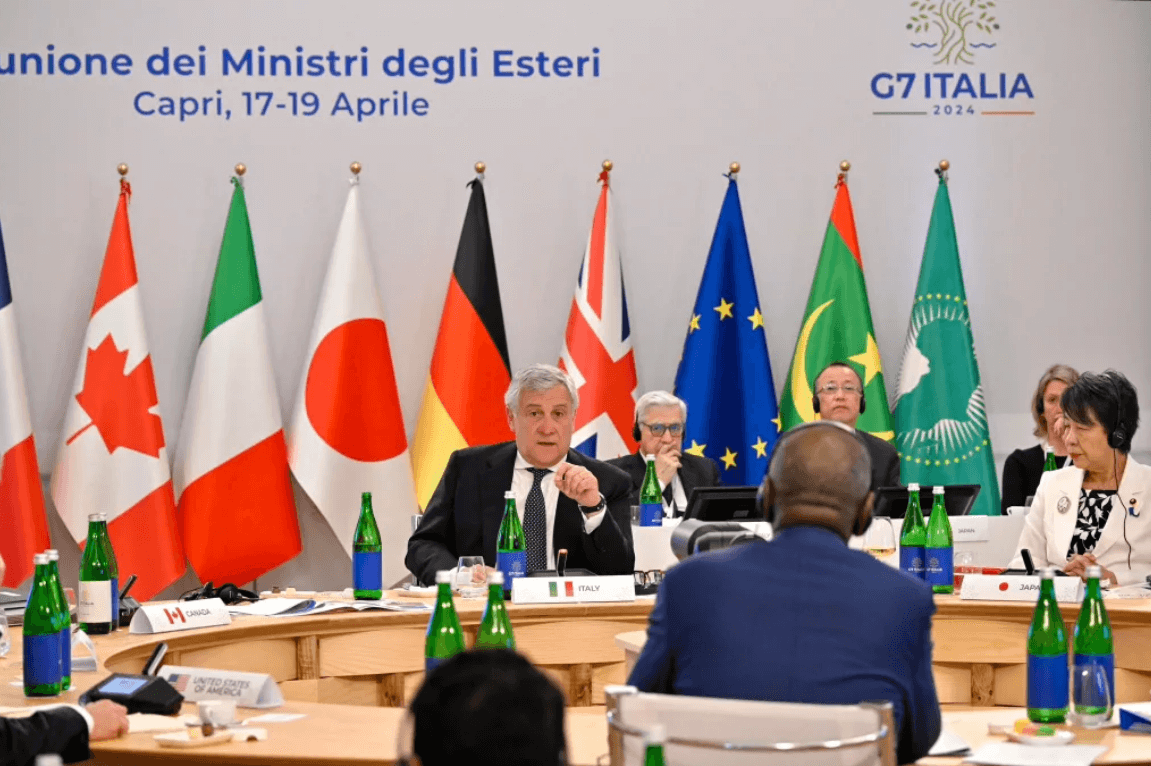Commentary: Uncovering the nextgen carbon market: Ethiopia in perspective
A recent picture of Addis Abeba taken by Henok Assefa of Precise consult International shows the visible marks of air pollution
Ambachew F. Admassie, for Addis Standard
Part 1
Addis Abeba, December 04/2018 – Sustainable Development practitioners believe our well-being cannot be ensured without a balanced interplay & robust accounting of parameters affecting the Society, Economic growth and the Environment. Social and Economic parameters mostly obvious, the Environment covers the state of the local and global environment that surrounds & sustains life. A disproportionate attention to one of these three is believed to lead to an unsustainable exhaustion of or harm on the other, making the perceived “gain” in the best attended parameter even more unsustainable. The ancient belief of the conventional throughput economics that runs along “never mind the way achieved, GDP growth and overabundance translates to good life”, has consumed more natural resources and spewed more waste to the ecosystem. It has also become clear that one could report fancy GDPs and still have stone throwing unemployed youth all over a country. The “balance” is often called Sustainable Development. Sustainable development can be envisaged at a project level, national or sub-national levels of a State. Even best, we are at a historic occasion where the pursuit towards sustainable development can still be incomplete without linking the thread from the national to the collective global action, at least for those parameters that we globally inter-depend on or considered as “global commons”.
One of the modern day challenges that are currently serving as the rally ground for such “circular” synergy is the state of the Changing Climate and its multidimensional implication on human well-being. We are in a state where centuries of exclusive attention to the economy or social bonanza resulted in the increased concentration of greenhouse gases in the atmosphere, raising the global temperature by an average of Approximately 1°C since the first industrial revolution. Increased concentration will lead to increased warming. This brought and will further have implication on how the other interrelated elements of our ecosystem function, including how human beings need to interact with nature and each other. The cost of adapting to the consequences of a changed climate will further become much more gigantic than avoiding it in the first place.
Addressing this challenge, based on the level of understanding of the global community in the 70’s, brought forth the 1994 Climate Convention which birthed the 1997 Kyoto Protocol (KP). It has run with the aim to achieve reduction of atmospheric Greenhouse Gas (GHG) concentration by 5% and 20% below the 1990 level, by 2012 and 2020 respectively. The KP achieved modest success through both in house reductions in Annex I states as well as financing actions that happened in Non Annex States. But it had limitations in that the biggest emitters were either not a party to the protocol or were free riders. The targets met through offsets obtained in return to purchasing mitigation credits in Non Annex states through the carbon market, was also criticized for failing to help achieve “net overall global mitigation benefits”. Evolution of knowledge also revealed that the Climate is changing much faster than previously predicted by the Intergovernmental Panel on Climate Change (IPCC) and hence required enhanced action by all states albeit involving a different set of understanding on allocation of responsibility and risks. This then led to the Paris Agreement. The SDGs are kept at heart for the first time. The global economy, the state of the local & global environment as well as the social consequences of our actions came to dictate a collective global cooperation inked under this Agreement.
What is Ethiopia’s “responsibility” in this agreement?
In the years leading to the Paris Agreement, most notably the Fifteenth meeting of the Conference of Parties to the Climate Change Convention (COP 15) held in Copenhagen, led by the IPCC report and also enthusiasm of the US to engage in the conversations, has brought forth a new bombshell that started to compel citizens of the world to start looking our updated global status compared to the worldview at the time of the 1994 Convention. Belief emerged dictating collective destiny hereafter should be viewed in a different light away from the original prism along “Developed” versus “Developing” responsibility divide. States started to appreciate the quest for “Equity” but also the need to participate in line with their “respective capability”. The Kyoto’s approach where the former (called Annex I) actively act while the later (called Non-Annex) voluntarily cooperate, started to give way to a new paradigm. In a bid to morally compel “free riders” adequately commit, a wave of Low Emissions Development strategies (LED) started to emerge from several states in several economic varieties. It is during this time that several institutions started to emerge or show interest in supporting smaller states formulate their LEDs. Ethiopia availed “its own” LED naming it the “Climate Resilient Green Economy (CRGE)” document prepared in 2010/2011 and publicly announced in 2012 at the Durban Platform.
Sources suggest it was actually initiated by a certain international consulting/government “advisory” firm with a million dollar funding from Global Green Growth Institute (GGGI). GGGI is a quasi-consulting “institute” that often attaches itself to such governments for a living. Ethiopia, mainly represented by Ethiopian Development Research Institute (EDRI) is one of the founding collaborators of this institute. EDRI is a “government think-tank” attached to the late Prime Minister Meles Zenawi’s office, which also performs the works of an everyday consultant as a “think-tank” product. Back then, with a view to depart from the KP paradigm, Developed states were energized to finance such ambitious strategies in poorer countries that would help to “morally” push up the likes of the BRICs to a more ambitious GHG mitigation pledge. Under this setting, Ethiopia has shown its “leadership” by formulating its LED strategy and pledged to eliminate all of the emissions growth after the base year (2010) by 2030 from all major economic sectors. Document estimates it as equivalent to abatement of 250MtCO2e. In parallel, it aimed to achieve middle income status by 2025 and states that achieving this would require a total of $150 billion.
On actual ground, Ethiopia’s GHG emission in every sector has continued to skyrocket after 2010 and no meaningful action or policy emerged that could redeem that trajectory. It is obvious that if any economic growth has happened and still continues to depend on older technologies to live, GHG emission can ONLY grow due to increased service level. From the linear projection indicated, by now it should have eliminated the economy wide pledge projected approximately 100 MtCO2e.
In the road transport sector only, the number and old vintage of fossil driven cars and trucks imported at glut level every year since 2010, shows the rate of road transport emission would even outgrow the assumed projected “business-as-usual” (BAU) rate of growth of ton-km freight, Passenger-Km commute as well as fuel efficiency improvement assumed in the CRGE, let alone fall below that trajectory. Even Forests, the simplest “technology” we may all agree is available to anyone in an agrarian state, are on a net deforestation range than increasing coverage. This actually happened in the eight years since the CRGE which on contrary states (Page 19); “It represents the ambition to achieve economic development targets in a resource-efficient way that overcomes the possible conflict between economic growth and fighting climate change” which on contrary agrees that Ethiopia’s “projected domestic savings and foreign direct investments, grants, and transfers will not be sufficient to finance these investments, leading to a significant finance gap”.
On the one hand the high level attention to the climate change challenge, the interest to embrace the urgency, the task of “bringing together” the often disorganized and ill-cooperating Ethiopian sectoral institutions, the steps taken to make Ethiopia become part of the global conversation & the mitigation levers identified (albeit non-exhaustive) were all commendable. On the other hand, Ethiopia’s pledge in the CRGE “Green Economy” document can be dubbed as the most unrealistically ambitious pledge in the world. No any other state in the world (even rich) claimed to be able to eliminate the whole of its emissions growth compared to a base year level in two decades and still achieve leap in growth from an LDC to a middle income economic status. Having been initiated by an international consultant that often assigned interns and developed in the prevailing secretive “developmental state” environment directly spearheaded from EDRI, it must therefore have been more of a “legacy” document than an adequately thought and publicly consulted national pledge for an international commitment. It may however have served the purpose of “leading” the world to show it is not “impossible” to just pledge as far as one thinks can always claim “sovereignty” to escape from scrutiny of reports on actual achievement. Sources also suggest that the underlying primary electronic data, assumptions and projections were not even availed to (were restricted from) the relevant institutions for quite longer, may not still exist. The work of assembling this document was just done at the office of the then federal Environmental Protection Authority (EPA) mainly for the sake of “political correctness” of “ensuring ownership” of the then passive national focal point, mostly active on attending international meetings.
At Durban in 2012, Parties have agreed to embark on a “Durban Platform” that involves a formal submission of such national pledges to a process that will be converting “whatever Parties pledged” to a Nationally Determined Contribution (NDC), synthesize pledges to observe the collective implication on the atmospheric concentration leading to the 1.5°C or 2°C goal and formalize into a document that will be agreed as “the Paris Climate Agreement”. Ethiopia converted the target in the CRGE document to its NDC, as what it would contribute to the collective action. The agreement notably expects Parties not to backtrack, instead subject themselves to a “stalk-take” to only raise their ambition every five years compared to each ambition submitted earlier. In the implementation arrangements shaping towards robust transparency of actions and reports thereof, it is going to be nothing like a domestic modus operandi of “whatever is reported is the achievement”. Hence one needs to ask, with a visibly obvious divide between the level of ambition of Ethiopia’s NDC and the lived national emissions reality, what can still be done as a responsible state?
The only safeguard that we remain with for now is our own rational re-interpretation of the texts inserted here and there in the CRGE document in line with the principles of the Climate Convention as well as some provisions in the Paris Agreement & operational derivatives. CRGE document states (Page 42) the actions would be categorized as “Supported”, “Unsupported” and “market based”. At some point, amidst all the prevailing attitudes to participation under the exclusive developmental state indulgence and ultra-high secrecy of the process (especially to the private sector), concerned stakeholders were able to submit letters of concern on the underlying philosophy of the strategy probably led later to directly inserted text of “Technical notes” and “Definition of the business-as-usual scenario” in the strategy. This may help to side skip the predicament we are in now. The pragmatic interpretation of the pledge, including the baseline scenario, will be very crucial in both achieving whatever is reasonably achievable as well as position Ethiopia to attract legitimate sources of finance under the agreement including, inter-alia, from clean-technology based joint investment FDI, different forms of Climate Finance, Low carbon Technology transfer cooperation and interestingly from the Paris birthed fresh carbon market involving Internationally Transferred Mitigation Outcomes (ITMOs) .
Building on the momentum arising out of the current national reform:
- What can we then do to prepare an adequately consulted & revised NDC submission that would still keep the pledge but eliminate the incoherent assumptions through translating the sparsely located “equity” clauses to a robust reflection of lived reality, against which our Paris pledges will be meaningfully evaluated?
- Which segment or level would we, as responsible state, scientifically agree to reasonably fall under our “respective capability” and hence amounting to our “unconditional” pledge?
- How can we enable our Private and Public entities to effectively engage in low carbon development and the associated Post 2020 carbon market under Article 6.2 and 6.4 of the Paris Agreement and earn tradable credits from ITMOs for achieving those reductions that are “beyond what we would be able to observe under the business as usual scenario & is achievable unconditionally”?
- How can we enhance actual domestic de-carbonization (GHG mitigation/abatement/removal) efficiency in every economic sector to ensure effective international participation?
On Part 2 next month, we will reflect on these and walk readers through the carbon market from historic origin and current status to how the future is shaping and actual outcome of COP24 (early December) in market rule making frontier. We will also cover how we Ethiopians can effectively engage. AS
Editor’s Note: Ambachew F. Admassie is a Sustainability Engineer, Advisor and Investor. He can be reached through Email: Ambachew.admassie@gmail.com. He tweets: @Ambachew41









